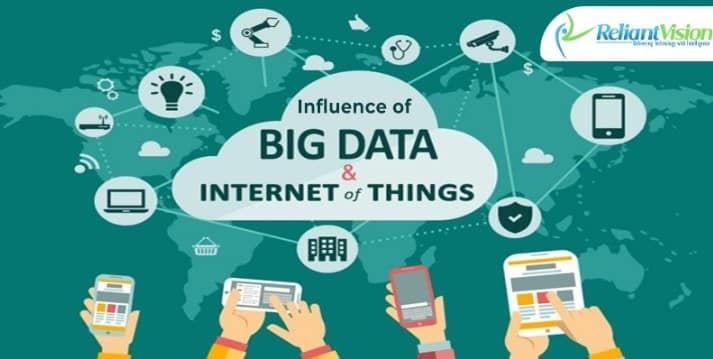Welcome to the exciting world of Big Data and the Internet of Things (IoT): Connecting Devices for Greater Insight. In this age of rapid technological advancement, it’s crucial to stay ahead of the curve. The IoT, which connects everyday devices to the internet, is becoming more prevalent, and Big Data is expanding alongside it. The two technologies complement each other, offering invaluable insights and opportunities for businesses and individuals alike. In this article, we’ll explore how they work together, their applications, and what the future may hold.
Big Data and the Internet of Things (IoT): Connecting Devices for Greater Insight
The Symbiosis of IoT and Big Data
The IoT and Big Data have a harmonious relationship, with each fueling the other’s growth. IoT devices generate vast amounts of data, while Big Data platforms analyze and interpret that information to provide actionable insights.
IoT Devices: The Data Producers
IoT devices, ranging from smart thermostats to autonomous vehicles, generate a constant stream of data. These devices connect to the internet, allowing them to send and receive information, which creates a real-time, interconnected web of data.
Big Data: The Data Cruncher
Big Data platforms are designed to store, manage, and analyze massive datasets. They employ advanced analytics, machine learning, and artificial intelligence (AI) algorithms to process and interpret the information gathered from IoT devices.
Unlocking the Potential of IoT and Big Data
Together, IoT and Big Data offer valuable insights and allow businesses to make data-driven decisions. In this section, we’ll explore some of the primary ways these technologies are revolutionizing various industries.
Enhancing Customer Experience
IoT devices and Big Data analysis can help businesses understand customer behavior and preferences, leading to a more personalized and efficient customer experience.
Optimizing Supply Chain Management
Real-time data from IoT devices can be analyzed to identify trends and patterns, allowing for better inventory management, demand forecasting, and streamlined logistics.
Improving Healthcare Outcomes
The integration of IoT and Big Data in healthcare has led to more accurate diagnoses, personalized treatment plans, and improved patient monitoring.
Driving Smart Cities
IoT devices and Big Data are being used to create more efficient, sustainable, and livable urban environments through better resource management, traffic control, and public safety.
Boosting Environmental Sustainability
IoT devices can help monitor environmental conditions, while Big Data analysis can identify trends and patterns, leading to more sustainable practices and policies.
The Future of IoT and Big Data
Next-Generation Connectivity
5G networks promise to revolutionize IoT and Big Data, offering faster speeds, reduced latency, and greater capacity for connected devices.
Enhanced Security Measures
As IoT and Big Data become more prevalent, the need for robust security measures becomes critical. Expect advancements in encryption, authentication, and privacy protection.
The Rise of Edge Computing
Edge computing will play a pivotal role in the future of IoT and Big Data, bringing data processing closer to the source and reducing latency.
FAQs
1. How are IoT and Big Data related?
IoT devices generate large amounts of data, which Big Data platforms then analyze and interpret to provide actionable insights.
2. What industries benefit from IoT and Big Data?
Numerous industries, including retail, healthcare, supply chain management, smart cities, and environmental sustainability, can benefit from IoT and Big Data integration.
3. What are the security concerns associated with IoT and Big Data?
Security concerns include data breaches, unauthorized access, and privacy violations. As IoT and Big Data become more prevalent, there’s a growing need for robust security measures, such as encryption, authentication, and privacy protection.
4. How does 5G impact IoT and Big Data?
5G networks offer faster speeds, reduced latency, and greater capacity for connected devices, which will revolutionize the way IoT and Big Data interact and expand their potential applications.
5. What is edge computing, and why is it important for IoT and Big Data?
Edge computing refers to data processing that occurs closer to the source of data generation (i.e., the IoT devices themselves), rather than in a centralized data center. This approach reduces latency, improves efficiency, and enhances the performance of IoT and Big Data applications.
6. How can businesses leverage IoT and Big Data for a competitive advantage?
Businesses can use IoT and Big Data to gain insights into customer behavior, optimize supply chain management, improve healthcare outcomes, drive smart city initiatives, and enhance environmental sustainability. By harnessing the power of these technologies, businesses can make data-driven decisions, streamline operations, and ultimately gain a competitive edge in their respective markets.
Conclusion
Big Data and the Internet of Things (IoT): Connecting Devices for Greater Insight have opened up a world of opportunities, transforming industries and revolutionizing the way we live and work. As these technologies continue to evolve, we can expect even more incredible advancements and applications in the future. By staying informed and embracing these cutting-edge technologies, businesses and individuals can unlock their full potential and thrive in today’s fast-paced, data-driven world.
Read More :
- MongoDB : Scalable NoSQL Database for Big Data Applications
- Big Data and Machine Learning : Driving Artificial Intelligence Forward
- Spark : Lightning-Fast Big Data Analytics and Processing
- Big Data Analytics : Unlocking Insights and Opportunities
- Apache Hadoop : The Leading Open Source Big Data Platform
